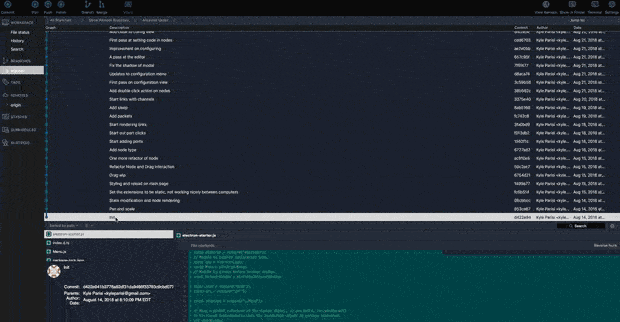
Found inside – Beginning and experienced programmers will use this comprehensive guide to persistent memory programming. Sometimes we need to ad-hoc switch to a different branch. So each important change that I do may have a significant impact on the functionalities of the project. Then push the changes as described above. I recently also had to rewrite a large git repository to get rid of some corruption in an early commit that started causing more and more problems.
SOURCETREE FORCE PUSH HOW TO
Found insideMaster the techniques needed to build great, efficient embedded devices on Linux About This Book Discover how to build and configure reliable embedded Linux devices This book has been updated to include Linux 4.9 and Yocto Project 2.2. From Sourcetree, click the Push button to push your committed changes. However, we cannot do that with uncommitted changes. People generally avoid history rewiriting, for a good reason: it will fundamentally diverge your repository from anyone who cloned or forked it. So if you'll make another commit on top of it but the 'undone' commit is pushed already, the history of your local branch and your remote tracking branch will diverge - and you'd have to push it either to another branch, or with -force, rewriting the remote branch. Found insideA guide to mastering Visual Studio 2017 About This Book Focus on coding with the new, improved, and powerful tools of VS 2017 Master improved debugging and unit testing support capabilities Accelerate cloud development with the built-in. Only use this option if you didn't push th. If you select the log entry to which you want to revert to then you can click on "Reset to this commit". If you just have a local commit you can also use the git reflog indexes to move back to a point in history even moving back from doing merges and pulls. The Push Indicator just reflects that your local copy of the repo is # of commits ahead of the remote. To make a shortcut for doing force-with-lease and other git tips, please take a look at my other article “ 16 Git Tips and Tricks”.Sourcetree reverse commit after push git revert 8437fbaf > git commit These commands will undo the changes made in commit 8437fbaf and create a new commit on the branch. Then I learned I could do that one with a -force-with-lease as well.
SOURCETREE FORCE PUSH FULL
In my 6 years of using git, I used -force only once: I removed a full directory from the whole history of the repo (to make it its own repo and import it as a submodule).

The push is then rejected if the remotes branch is changed. did someone push new commits when we were rebasing. Using this flag, git checks if the remote version of the branch is the same as the one you rebase, i.e. To avoid that, one can instead pass the -force-with-lease flag. In this case, it is very much possible that someone had really pushed something to your branch and you have just thrown it away.

By doing that, git will ignore the remote history entirely and overwrites it by the local version of the branch. When pushing after a rebase, one could pass the -force flag to bypass the restriction. We can generally call all of these cases “rebase”, as all are achieved by doing an ordinary or interactive rebase.

All of the following cases break the fast-forward rule and are therefore rejected by an ordinary push: Git does that because it suspects that someone has pushed some new commits to the remote branch you’re trying to push into. When pushing to the remote repository, git will reject the push if the remote one is not an ancestor of the local one. Update: When doing a force push on the IntelliJ IDE (since version 2021.3), it actually does a force with lease.


 0 kommentar(er)
0 kommentar(er)
